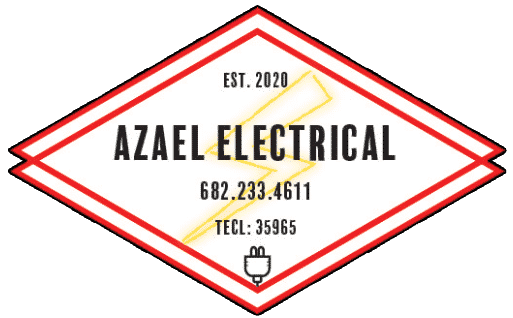Electricity is a part of our daily lives, but it can also be very dangerous, especially for kids. Kids are naturally curious, and they often don’t understand the risks associated with electrical outlets, cords, and devices. To ensure their safety, it’s important to teach them about electricity and take steps to make your home safer.
By combining education with practical safety measures, you can keep your kids safe around electricity. This article will provide detailed tips and guidelines to help you achieve this goal.
Teaching Kids About Electrical Safety
Teaching kids about electrical safety is the first step in keeping them safe. Start with simple explanations that are easy for a child to understand. Tell them that electricity is powerful and can be dangerous if not treated with care.
Show them around the house and point out electrical outlets, cords, and devices. Explain that these are places and things they should avoid playing with. Make sure they understand that putting objects into electrical outlets can cause shocks or burns.
Share basic safety rules:
1. Never stick anything into outlets.
2. Don’t yank cords from outlets; instead, teach them to pull from the plug.
3. Keep water away from electrical devices. Show them examples, like keeping a drink away from a computer.
4. Tell an adult if a cord is frayed or damaged.
5. Stay away from power lines and electrical substations when playing outside.
Reinforcing these rules regularly helps kids remember and follow them. You can make learning fun by using videos, books, and games that teach about electrical safety. The goal is to make understanding electrical risks second nature to them.
Childproofing Outlets and Cords
Childproofing your home is a practical way to prevent electrical accidents. Small children are curious and may try to insert objects into outlets or pull on cords, so taking steps to make your home safer is crucial.
1. Outlet Covers: Use plastic outlet covers or safety plugs to block unused outlets. These are simple to install and effective in keeping little fingers out.
2. Tamper-Resistant Outlets: Consider installing tamper-resistant outlets. These special outlets have a built-in shutter mechanism that prevents anything but a plug from going inside.
3. Cord Shorteners: Keep cords out of reach by using cord shorteners or winders. This minimizes the risk of kids tripping over cords or yanking them out of outlets.
4. Furniture Placement: Place furniture strategically to block access to outlets and cords. Heavy pieces like bookshelves and sofas can keep curious kids away from these hazards.
5. Power Strip Covers: If you use power strips, cover them with safety cases. These cases prevent kids from unplugging cords or sticking items into the sockets.
Childproofing should be a part of your regular household safety checks. Make sure everything stays in place and remains in good condition. These measures provide added layers of safety, making your home a secure place for your children.
Safe Practices for Using Electrical Devices
Teaching kids safe practices for using electrical devices helps prevent accidents. Start by showing them how to use devices correctly. Let them know that gadgets like tablets and computers need to be handled with care.
Kids should learn these safety tips:
1. Avoid Overloading Sockets: Explain that plugging too many devices into one socket can cause it to overheat and might start a fire.
2. Use Devices Away from Water: Remind kids never to use electric items near water, like in the bathroom or by the pool.
3. Unplug Devices Safely: Teach them to pull out plugs carefully by gripping the plug, not the cord, to avoid damaging the cord.
4. Report Problems: If they notice a spark, strange smell, or feel heat from a device or outlet, they should inform an adult immediately.
5. Switch Off Unused Devices: Encourage kids to turn off and unplug devices when they are not in use. This practice saves energy and reduces risk.
By following these simple rules, kids can use electrical devices safely. Supervision is key, especially for younger children, to ensure they understand and follow these safe practices.
Emergency Procedures: What to Do if an Accident Happens
Even with all precautions, accidents can happen. Knowing what to do in an emergency can save lives and prevent more serious injuries. Here are key steps to take if an electrical accident occurs:
1. Stay Calm: Keeping calm helps you think clearly and act quickly.
2. Do Not Touch the Victim: If someone is getting shocked, do not touch them directly with your bare hands. Use a non-conductive item like a wooden broom to push the person away from the source.
3. Turn Off the Power: If possible, turn off the power from the main breaker box to stop the flow of electricity.
4. Call 911: Immediately call 911 for medical help. Inform them about the nature of the electrical injury.
5. Provide First Aid: If the person is unconscious, check their breathing and pulse. If they aren’t breathing, begin CPR if you are trained to do so. Keep the person warm and stay with them until help arrives.
Teach kids how to dial 911 and explain the basics of these emergency procedures in simple terms. It is important for everyone in the family to be prepared and know what to do in case of an emergency.
Conclusion
Keeping kids safe around electricity requires a combination of education and preventative measures. Teaching them about electrical safety, childproofing your home, encouraging safe device usage, and preparing for emergencies are all essential steps. These practices will create a safer environment for your children to explore and grow, free from the dangers of electrical hazards.
If you need professional help making your home safer, consider reaching out to us. Our expert team can assist you in childproofing and ensuring your home’s electrical systems are secure. Visit Azael Electrical today to learn more about our services and how we can help keep your family safe.

